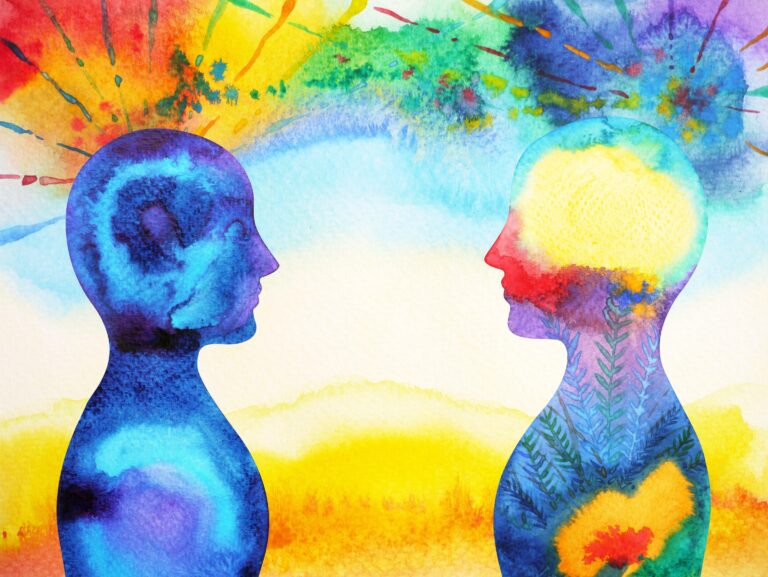In today’s fast-paced and often stressful world,mental health has become a priority for many seeking balance and well-being. while traditional therapies play a crucial role, an innovative and expressive approach is gaining recognition: art therapy. “” explores how creative expression through art can serve as a powerful tool for emotional healing, self-finding, and psychological resilience. Whether you’re a mental health professional, an artist, or someone curious about alternative healing methods, this article sheds light on the profound ways art therapy can transform lives and support mental wellness from within.
table of Contents
- The Therapeutic Benefits of Art therapy for Mental Health Recovery
- Exploring different Art Therapy Techniques and Their Psychological Impact
- Integrating Art Therapy into Conventional Mental Health Treatment Plans
- Practical Tips for Starting Your Own Art Therapy Practice or Sessions
- In Summary
The Therapeutic Benefits of Art Therapy for Mental Health Recovery
engaging in artistic expression serves as a powerful catalyst for emotional healing and self-discovery.Through the use of colors, shapes, and textures, individuals can externalize complex feelings that often remain hidden in traditional verbal therapy. This creative process fosters a safe environment where people can explore their subconscious, reduce stress, and enhance their emotional resilience. Art therapy encourages mindfulness, allowing one to focus on the present moment, which in turn can alleviate symptoms of anxiety and depression.
Key therapeutic outcomes of art therapy include:
- Improved self-awareness and emotional insight
- Enhanced coping skills and problem-solving abilities
- Reduction in feelings of isolation and increased social connection
- Non-verbal communication of trauma and pain
- Promotion of relaxation and mental clarity
Exploring Different Art therapy Techniques and Their Psychological Impact
Art therapy encompasses a variety of approaches, each offering unique benefits to mental health. Techniques such as expressive painting allow individuals to project inner emotions onto a canvas, providing a safe outlet for feelings that are tough to verbalize. Meanwhile, collage-making encourages clients to assemble images or words that resonate with their experiences, fostering self-reflection and empowerment.Another popular method, mandala creation, promotes mindfulness and emotional balance through repetitive patterns that focus the mind and soothe anxiety.
The psychological impact of these techniques is profound and well-documented. Engaging in art therapy can reduce symptoms of stress, depression, and trauma by unlocking subconscious thoughts and initiating healing on a deeper emotional level. Some of the notable effects include:
- Improved emotional regulation and resilience
- Enhanced self-awareness and introspection
- Increased sense of control and personal agency
- Reduction in symptoms of anxiety and PTSD
- Strengthened communication skills without spoken words
Integrating Art Therapy into Conventional Mental Health Treatment Plans
Incorporating art therapy into traditional mental health treatment plans offers a dynamic and holistic approach that enriches the healing process. This integration allows clinicians to address emotional and psychological challenges through creative expression, providing patients with an alternative channel to articulate complex feelings that might be difficult to convey through words alone. By blending evidence-based psychotherapeutic techniques with art-making, individuals can explore subconscious thoughts, reduce anxiety, and foster self-awareness in a safe, non-judgmental setting.
Key benefits of this integrative approach include:
- Enhancing patient engagement and motivation in therapy
- Facilitating emotional release and trauma processing
- Promoting neuroplasticity and cognitive flexibility through creative tasks
- Providing measurable outlets for progress evaluation outside traditional talk therapy
By uniting creativity with clinical expertise, mental health professionals can tailor individualized treatment plans that honor the unique needs of each patient, ultimately leading to more resilient and empowered mindsets.
practical Tips for Starting Your Own Art Therapy Practice or Sessions
Launching your own art therapy sessions begins with a deep understanding of both the therapeutic and artistic processes. Start by securing the necessary qualifications and certifications to build a credible foundation. Next,consider your ideal client base and the specific mental health challenges you want to address. Creating a welcoming, well-equipped space where clients can feel safe to express themselves visually is essential. Don’t underestimate the power of networking with other mental health professionals and local art communities to foster referrals and collaborative opportunities.
When crafting your sessions, tailor activities to accommodate different comfort levels and artistic abilities. Flexibility and empathy are key to adapting your approach as clients progress. Some effective strategies to implement early on include:
- Incorporating varied art materials to encourage exploration and creativity
- Setting clear, achievable goals to track therapeutic progress
- Maintaining confidentiality and establishing consistent session routines
- Utilizing reflective discussion to connect art outcomes with emotional insights
In Summary
In a world where mental health challenges are increasingly acknowledged, art therapy emerges as a powerful, compassionate approach to healing. its ability to bridge the gap between emotion and expression offers individuals a unique pathway to self-discovery and recovery.As we continue to explore and embrace creative therapies, it’s clear that art is more than just a means of expression—it’s a vital tool for nurturing mental well-being. Whether you’re a mental health professional, an artist, or someone seeking new ways to cope, understanding the impact of art therapy opens doors to healing minds in transformative ways.

